- News
- Reviews
- Bikes
- Components
- Bar tape & grips
- Bottom brackets
- Brake & gear cables
- Brake & STI levers
- Brake pads & spares
- Brakes
- Cassettes & freewheels
- Chains
- Chainsets & chainrings
- Derailleurs - front
- Derailleurs - rear
- Forks
- Gear levers & shifters
- Groupsets
- Handlebars & extensions
- Headsets
- Hubs
- Inner tubes
- Pedals
- Quick releases & skewers
- Saddles
- Seatposts
- Stems
- Wheels
- Tyres
- Tubeless valves
- Accessories
- Accessories - misc
- Computer mounts
- Bags
- Bar ends
- Bike bags & cases
- Bottle cages
- Bottles
- Cameras
- Car racks
- Child seats
- Computers
- Glasses
- GPS units
- Helmets
- Lights - front
- Lights - rear
- Lights - sets
- Locks
- Mirrors
- Mudguards
- Racks
- Pumps & CO2 inflators
- Puncture kits
- Reflectives
- Smart watches
- Stands and racks
- Trailers
- Clothing
- Health, fitness and nutrition
- Tools and workshop
- Miscellaneous
- Buyers Guides
- Features
- Forum
- Recommends
- Podcast
TECH NEWS
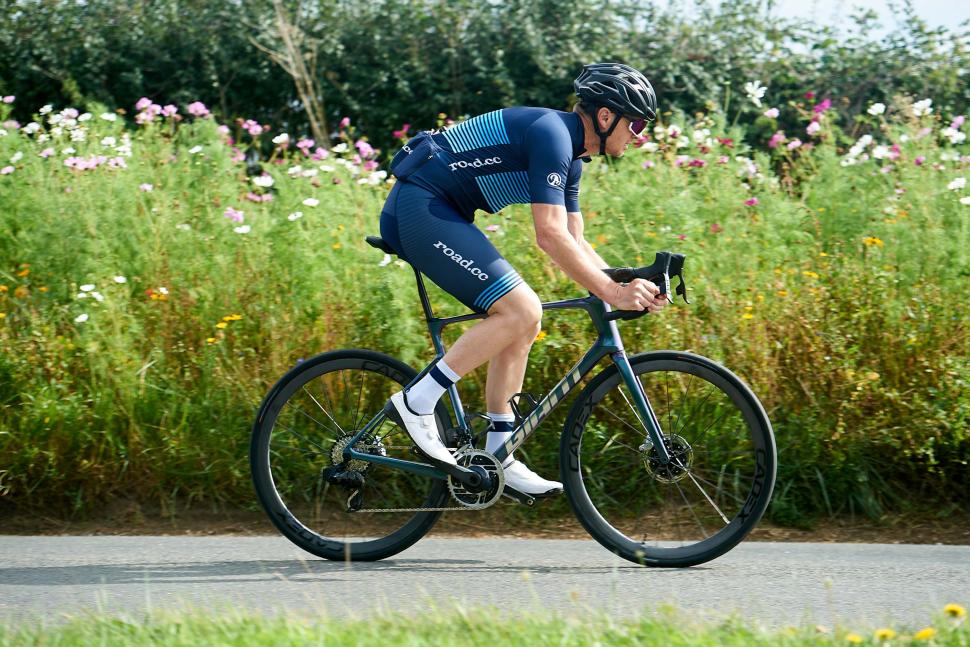 2024 Giant Defy Advanced SL 0 - riding 5.jpg
2024 Giant Defy Advanced SL 0 - riding 5.jpgGiant launches “lighter, smoother and more efficient” Defy endurance road bike: first ride
Giant has introduced updated Defy endurance road bikes which, it claims, are “lighter, smoother, and more efficient” than ever before. The bikes come with a revised geometry and space to fit tyres up to a whopping (by road bike standards) 38mm wide, while the top-level Defy Advanced SL has a claimed frame weight of just 785g (size medium) – exceptionally light for an endurance bike. Check out all the news and then read our early impressions of the ride...
“This fifth-generation Defy range takes everything riders love about it – namely its unbeatable blend of lightweight efficiency and smooth compliance – and levels up,” says Giant. “It’s now lighter, smoother and more efficient. It’s the perfect companion for an all-day sportive, an ambitious gran fondo, and epic solo days on challenging roads.
“New features and technologies make this Defy feel both more responsive and more composed. It’s built on an all-new, totally re-engineered composite frameset that now comes in three choices: Defy Advanced SL, Defy Advanced Pro and Defy Advanced.
> Read our Giant Propel Advanced Pro 1 2023 review
“Each series is significantly lighter and more efficient than the previous generation. Each combines greater pedalling stiffness with an even smoother ride thanks to innovative engineering and integrated components.”
Keeping it simple
Unlike Specialized – with the Future Shock travel system on its Roubaix bikes – and Trek – with its IsoSpeed design intended to soak up bumps on its Domane – Giant has always kept the technology of its Defy range relatively straightforward, and that remains the case with this new incarnation.
“One of the hallmarks of Defy is a commitment to improving performance without overcomplicating the design,” says Giant. “Based on market feedback over the years – along with input received from top pros who have raced Defy bikes at events like Paris-Roubaix – the development team chose not to rely on shock absorbers, bushings or other add-ons that are used in many of today’s endurance road bikes.
“While those shock-absorbing technologies can sometimes achieve certain performance attributes, they compromise weight, durability and ease of maintenance –all factors that matter to real riders. For that reason, the new Defy builds on the innovations this bike has established and proven over the years.
“These include a new D-Fuse seatpost, which produces road-smoothing compliance without adding weight, and a new Contact SLR/SL D-Fuse handlebar that applies the same design principles and benefits to the front end of the bike.”
We’ll give you more details on both of those components in a sec.
> Best endurance road bikes 2023 — perfect for sportives, audax and mile-munching
Beyond that, Giant says, the Defy owes its performance to factors like the raw carbon fibre sheet – produced in the company’s own factory – the layup, which uses up to 132 separate pieces of composite, and the individual components that it specs.
As mentioned, the new Defy comes in three different levels, the top-end Defy Advanced SL boasting a frame weight that’s a claimed 785g (medium, no hardware). That's very light for an endurance bike.
This is 195g (19.9%) less than the previous generation’s top-of-the-line Defy Advanced Pro frame, according to Giant’s figures. For those without a forensic knowledge of how Giant does things, the brand’s carbon road bike ranges are usually divided into Advanced SL (top), Advanced Pro (middle), and Advanced (bottom), although there was no fourth-generation Defy Advanced SL so we’re not really comparing like with like here.
Giant claims that the new Defy Advanced SL has a stiffness-to-weight ratio that’s 28% higher than that of the outgoing Defy Advanced Pro, and that the fork used on the new Defy Advanced SL and Defy Advanced Pro weighs 350g, 15% lighter than the previous generation. The new Contact SLR D-Fuse handlebar is said to be 8% lighter.
Those are enough claims and statistics for now but don’t fear, there will be more.
Increased compliance
Like many other brands, Giant argues that increased compliance is important not only because it leads to more comfort but also because smoothness reduces fatigue and ultimately makes for higher speed.
“In the rear of the bike, dropped seatstays absorb road shocks and vibrations as they travel up from the rear wheel toward the rider,” says Giant.
Like many other road bikes, most endurance bikes come with dropped seatstays these days – the stays meet the seat tube lower than the top tube/ seat tube junction – Trek’s Domane being a notable exception.
“Up front, the newly designed fork is made with Giant’s Advanced SL or Advanced composite (depending on the series), which absorbs shocks travelling up through the front wheel,” says Giant.
> Find out all about the Giant TCR Advanced 2
Each Defy is specced with components designed to increase compliance further, including an updated D-Fuse seatpost. Giant has used D-Fuse seatposts for years, originally on cyclocross bikes before extending their use to the road bike range. The new version thins radically towards the top.
“The heart of the design is a D-shaped composite shaft that absorbs shocks and adds a small amount of flexing action (up to 7mm),” says Giant. “This significantly reduces the energy of bumps and vibrations that travel through one of the bike’s key contact points, the saddle. Testing shows that the new Defy Advanced SL frameset and seatpost produce 42% greater compliance (combined) than the previous generation Defy Advanced Pro series.”
Told you there’d be more stats.
Giant has also introduced new versions of its Contact SLR/SL handlebars which use similar D-shaped composite tubing for the top sections. The idea is to provide “greater downward compliance while at the same time increasing upward stiffness”. In other words, the theory goes, you get shock-absorption qualities alongside efficiency when sprinting or climbing out of the saddle.
Giant claims that the new Contact SLR D-Fuse handlebar – which comes on Defy Advanced SL and some Defy Advanced Pro models – provides 40% more compliance than the previous generation.
One other important change is the increase in tyre clearance on the new-generation bikes. Each Defy comes fitted with 32mm tyres – tubeless, so you can run them at low pressures for increased comfort – but there’s space for tyres up to 38mm wide, an increase of 3mm over the previous iteration.
Taking control
Giant is keen to emphasise the amount of control the Defy range offers.
“An oversized and tapered steerer tube boosts stiffness up front for razor-sharp steering and cornering performance,” says Giant.
The Defy Advanced SL and Defy Advanced Pro both use Giant’s Overdrive Aero fork/headset/stem sizing: the tapered steerer is 1-1/4in at the top, 1-1/2in at the bottom. The Defy Advanced uses a steerer that’s 1-1/8in at the top and 1-1/4in at the bottom.
As mentioned, all Defy bikes are fitted with either a Contact SLR D-Fuse or Contact SL D-Fuse composite handlebar (depending on the model). As well as the compliance, Giant says that these “offer a unique ergonomic shape with a short reach” while the drops have an 8° flare (so the bottom sections sit wider than the hoods) that’s designed to provide stable handling.
The new stems – the Contact SLR AeroLight, Contact SL AeroLight or Contact AeroLight, depending on the series — are said to be made with “stiff composite or aluminium material and offer semi-internal cable routing”.
Semi-internal? The stems are n-shaped in profile, the cables and hoses sitting in the hollow on the underside so they can only be seen from below (the Giant Propel uses a similar system).
Giant says, “Every Defy model comes with a WheelSystem and tyres that are ideal for endurance road riding – offering an ideal balance of vertical forgiveness and extremely low side-load drag to improve control without sacrificing aero efficiency.
“From the wide, hookless carbon rims of the Defy Advanced SL and Defy Advanced Pro series to the high-volume 32mm tubeless tyres that come on every Defy model, the wheels and tyres work as a system to deliver efficiency, grip and all-around control.”
All of these wheels and tyres are from Giant’s own range – or from the Giant-owned Cadex brand – and hydraulic disc brakes are specced across the board.
While we're talking about wheels and tyres, all models include integrated mudguard mounts.
Stiffness-to-weight
Giant says that it has measured stiffness on medium-sized framesets using the protocols established by Germany’s Tour magazine. Each frame was locked at the rear dropouts with lateral force applied to the fork.
“One of the key findings is that the flagship Defy Advanced SL provides up to 8.9% greater transmission stiffness than its top-of-the-line predecessor” says Giant.
As mentioned previously, the top-of-the-line predecessor was the 2023 Defy Advanced Pro – a level lower and considerably cheaper than the Defy Advanced SL.
Anyway, here are the stiffness figures provided by Giant...
“Increased frame stiffness means better power transmission, enabling the rider to reach and maintain higher speeds with less effort,” says Giant. “The combination of lower weight and higher stiffness adds up to unrivalled overall efficiency.”
According to Giant’s figures, the new mid-level Defy Advanced Pro is stiffer than the previous version too, although that’s far more marginal – just 0.2%.
Giant says the fact that the new Defy Advanced SL is significantly lighter than the outgoing Defy Advanced Pro – as well as being stiffer – means the stiffness-to-weight ratio is 28% higher.
Giant also says that both the new Defy Advanced Pro and the new Defy Advanced have higher stiffness-to-weight ratios than the 2023 Giant Defy Advanced Pro.
Defy drops weight
As mentioned, the new top-end Defy Advanced SL has a claimed frame weight of 785g (size medium). That compares with 980g for the frame of the 2023 Defy Advanced Pro.
The new Defy Advanced SL’s fork is a claimed 345g, compared with 406g for the 2023 Defy Advanced Pro’s fork.
Here are all of Giant’s quoted figures:
To save you doing the arithmetic, Giant claims that the new Defy Advanced SL is 228.4g lighter than the 2023 Defy Advanced Pro.
The new Defy Advanced Pro is 153.4g less than the 2023 Defy Advanced Pro and the new Defy Advanced is 117.4g lighter than that reference bike.
You’ll notice that the frame weight is exactly the same for the Defy Advanced Pro as for the Defy Advanced. There’s a good reason for that: they share a frame, it’s just that Giant fits it with differently sized headset bearings and a different fork, depending on the series.
Tweaked geometry
All three new Defy platforms share a geometry that’s a little less relaxed than previously. Giant says that it’s responding to consumer demand here.
Let’s take the medium-sized model as an example. It has a 545mm top tube, 480mm seat tube, and 150mm head tube. The stack is 558mm and the reach, is 379.8mm, giving a stack/reach of 1.47.
Previously, the medium-sized Defy had the same length seat tube and top tube, but the head tube was 160mm – 10mm longer. The stack was 567mm and the reach was 377mm, giving a stack/reach of 1.50.
For comparison, the stack height of a medium-sized Giant TCR road bike is 545mm and the reach is 388mm, giving a stack/reach of 1.40 – so, as you’d expect, the TCR’s ride position is significantly more aggressive.
Giant has reduced head tube length by 10mm across all sizes of the Defy, so although the ride position is nothing like that of the TCR, it’s lower than it used to be.
Differences between the Defy platforms
The Defy Advanced SL is the lightest version, made from what Giant calls its Advanced SL composite and coming with a claimed frame weight of 785g (size medium).
The Defy Advanced Pro and Defy Advanced share a frame that’s made with Giant’s Advanced Composite and weighs a claimed 860g.
Whereas the Defy Advanced Pro and the Defy Advanced SL use the same 345g fork, the Defy Advanced has a slightly heavier (381g) model.
The Defy Advanced SL and Defy Advanced Pro both use Giant’s Overdrive Aero fork standard with a 1-1/4 in to 1 1/2in steerer.
The Defy Advanced uses a 1-1/8in to 1-1/4in tapered steerer.
Beyond the frameset, the Defy Advanced SL uses Giant’s top-level D-Fuse SLR seatpost and handlebar, whereas less expensive models are specced with Giant’s not-so-posh D-Fuse components.
All levels get internal cable routing, Giant wheels/tyres, and flat-mount disc brakes.
Models and prices
Defy Advanced SL 0, £11,499
Groupset SRAM Red eTap AXS with Quarq DZero power meter
Wheels Cadex 36 Disc carbon
Defy Advanced SL 1, £8,499
Groupset Shimano Ultegra Di2 with Giant Power Pro power meter
Wheels Giant SLR 1 36 carbon
Defy Advanced Pro 0, £5,999
Groupset Shimano Ultegra Di2 with Giant Power Pro power meter
Wheels Giant SLR 1 36 carbon
Defy Advanced Pro 1, £4,599
Groupset Shimano 105 Di2 with Giant Power Pro power meter
Wheels Giant SLR 1 36 carbon
Defy Advanced Pro 2, £3,499
Groupset Shimano 105
Wheels Giant SLR 2 36 carbon
Defy Advanced 0, £3,299
Groupset SRAM Rival eTap AXS
Wheels Giant P-R2 Disc alloy
Defy Advanced 1, £3,199
Groupset Shimano 105 Di2
Wheels Giant P-R2 Disc alloy
Defy Advanced 2, £2,699
Groupset Shimano 105
Wheels Giant P-R2 Disc alloy
Defy Advanced 3, £2,299
Groupset Shimano Tiagra
Wheels Giant S-R2 Disc alloy
Giant Defy Advanced SL first ride
We’ve had the new Giant Defy Advanced SL in for review here at road.cc for about a week. During that time, I’ve managed to ride it four times – enough to form some initial impressions.
The first thing to say is that the Advanced SL is the uppermost of the three Defy levels. The second thing to say is that the SL 0 is the top model within that level, so we’re talking about a very high-end bike here. It’s built up with SRAM’s flagship Red eTap AXS groupset – complete with a Quarq DZero power meter – and Cadex 36 Disc wheels laced with aero carbon spokes. You get the idea: it’s an upmarket machine. The price? Well, it's £11,499, I'm afraid, but the Defy range starts at £2,299.
As mentioned, the geometry is the same whichever of the new Defy models you go for. With a head tube that’s shrunk 10mm from previously, the new Defy splits the difference between the old model and the Defy and Propel road bikes, and that’s exactly how it feels when you climb aboard.
The previous Defy didn’t have you riding bolt-upright but the handlebar was positioned higher and closer to the saddle than on a more race-focused bike. It was pretty relaxed by road bike standards. I got on with it absolutely fine although the front end was a bit too high for a bike that I’d buy myself.
Your position on the new Defy feels more sporty. Okay, the difference is only 10mm but it adds a racy edge to the ride which I really like. I’ve not noticed any more stress on my back or neck than with the previous model – but I do tend to ride bikes with more aggressive geometries than this on a regular basis.
You might prefer the new geometry or you might not. If it’s not to your taste, you can always keep the stem and handlebar high with headset spacers.
One other ingredient that’s the same whatever Defy model you go for is the tyre width. Giant fits 700 x 32mm tyres across the range but the trusty road.cc vernier callipers measured ours at 34.2mm on the Cadex 36 rims. That’s pretty chunky for a road bike, and Giant reckons you can go up to 38mm.
Greater tyre clearance is highly fashionable, not just for endurance bikes but for road bikes generally. Specialized says you can fit 40mm tyres to its new Roubaix, for example. It makes a lot of sense and adds a load of versatility.
All of the tyres Giant fits are tubeless so you can run them at low pressures for oodles of comfort without the risk of pinch flats. I’ve done that and they feel great, even on some really nasty, beat-up road surfaces.
Oh, one other thing about the way the bike feels: the flare on the handlebars. The large-sized bike comes with a 44cm bar that measures more like 47cm (centre to centre) at the ends. You really notice that. Whether or not you're a fan is a different matter, but it certainly adds some stability.
I won’t talk any more about comfort here because I’ve not ridden the bike enough for that, but I would say that if you’re looking for a forgiving bike, the ability to fit 38mm tyres has to be a big plus.
We weighed our Giant Defy Advanced SL 0 at 7.24kg. That’s a size large, including bottle cages and computer mount, but without pedals.
I’m not one of those people who gets overly excited by bike weight – it's nice and all – but I’ve got to say that the Defy Advanced SL 0 accelerates astonishingly quickly for an endurance bike. Yes, it’s an endurance bike fitted with SRAM Red and top-end wheels so that’s not entirely surprising, but even so, it’s really quick off the mark. If you think endurance bikes are all like big old sofas, think again.
The Defy Advanced SL is also way stiffer than you might expect when you get out of the saddle to sprint or climb. Okay, it isn’t as pin-sharp and efficient as something like Giant’s performance-focused TCR bike, but it’s not a million miles behind. It feels more direct than a lot of race bikes out there.
To sum up for the time being, I’d say that the new Giant Defy – at least the Advanced SL 0 version that I’ve been riding – is an endurance bike that thinks it’s a road race bike. A little bit. I mean, it's still an endurance bike – very much so – but with some race bike-esque features.
The weight and stiffness are those of a race machine, but then you have an endurance geometry – albeit not as relaxed as it used to be – big tyres, and the D-Fuse seatpost and handlebar that are designed with comfort in mind. It’s a really interesting mix.
Are many people going to drop £11.5k on the Giant Defy Advanced SL 0? Nope, of course not, but there are Defy options for the rest of us too.
Mat has been in cycling media since 1996, on titles including BikeRadar, Total Bike, Total Mountain Bike, What Mountain Bike and Mountain Biking UK, and he has been editor of 220 Triathlon and Cycling Plus. Mat has been road.cc technical editor for over a decade, testing bikes, fettling the latest kit, and trying out the most up-to-the-minute clothing. He has won his category in Ironman UK 70.3 and finished on the podium in both marathons he has run. Mat is a Cambridge graduate who did a post-grad in magazine journalism, and he is a winner of the Cycling Media Award for Specialist Online Writer. Now over 50, he's riding road and gravel bikes most days for fun and fitness rather than training for competitions.
Latest Comments
- bikes 14 min 7 sec ago
My son was driving normally and then stopped and then a cyclist hit him because he 'obviously didn't see him' which sent the cyclist into a rage is...
- Surreyrider 38 min 37 sec ago
I've worked in local government before and some really don't need any training for that - they're already masters!
- Rendel Harris 4 hours 35 min ago
They have here: results at 14.40. The aero bike was roughly fifteen seconds faster than a climbing bike on a descent of around 6 km, so about 3km/h...
- wtjs 4 hours 49 min ago
As I've also placed here the nutter Audi and white van drivers, I've decided to give those no-nonsense keep-the-country-moving BMW drivers a list...
- polainm 5 hours 52 min ago
100% this. Policing mentality is formed by social 'norms', and the cyclist witchhunting across social media is the UK norm. Close passing a person...
- David9694 7 hours 17 min ago
That's a clear 2 points awarded there, but I guess as there's now a 25% tariff you'll only get 1.5
- mark1a 7 hours 28 min ago
Fawkes Cycles is only local if you live near Oldham. That's nearly 300 miles away from me. Also, any retailer that doesn't participate in an...
- David9694 7 hours 30 min ago
Openreach under fire over delays to Amesbury cabinet repairs...
- Destroyer666 15 hours 28 min ago
Anodizing the aluminium is also for corrosion resistance and therefore enhances the longevity of the rims while this is not really a case for...
- bobbinogs 16 hours 42 min ago
Wheelsmith has always been very good for me. Malcolm was always very opinionated so I got bored with him telling me I should be riding tubeless,...
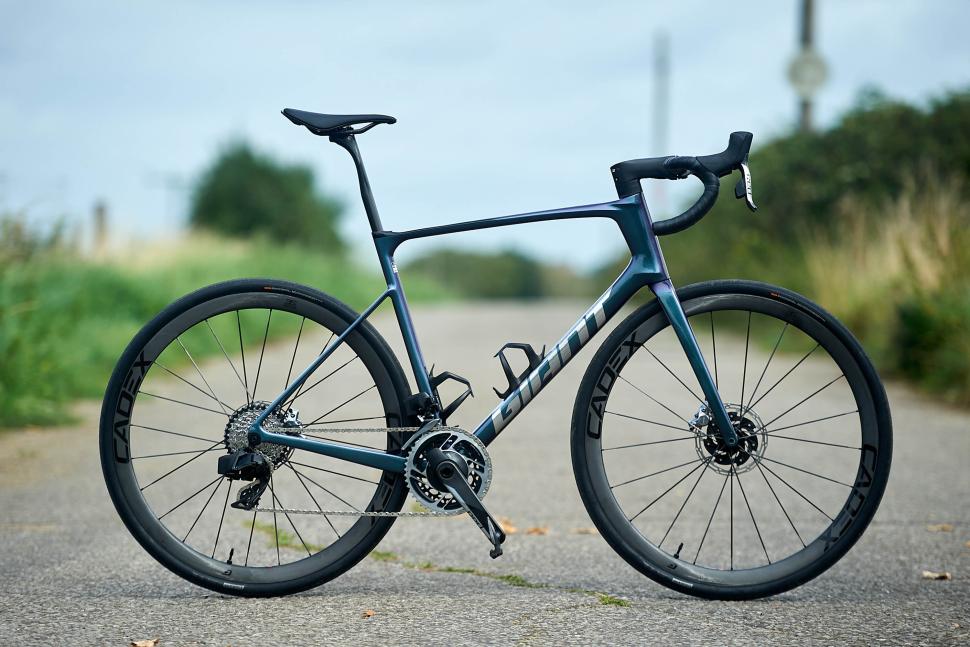
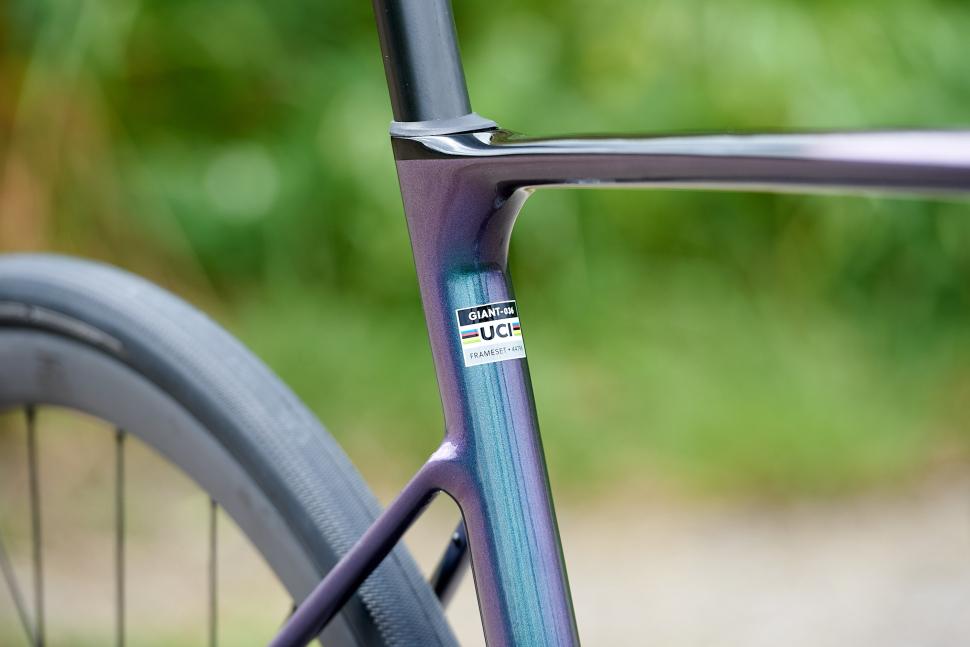
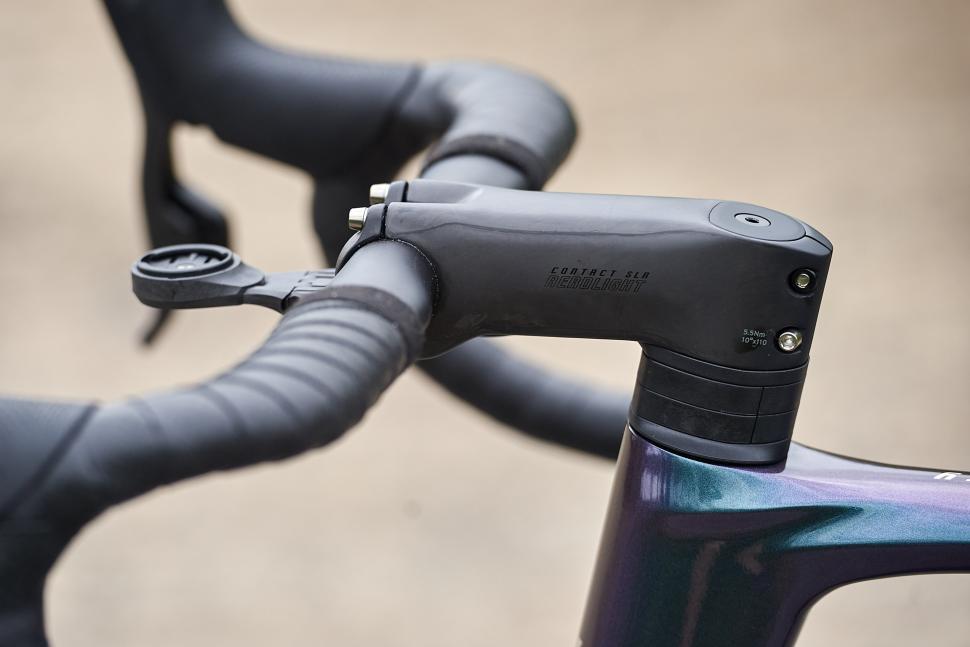


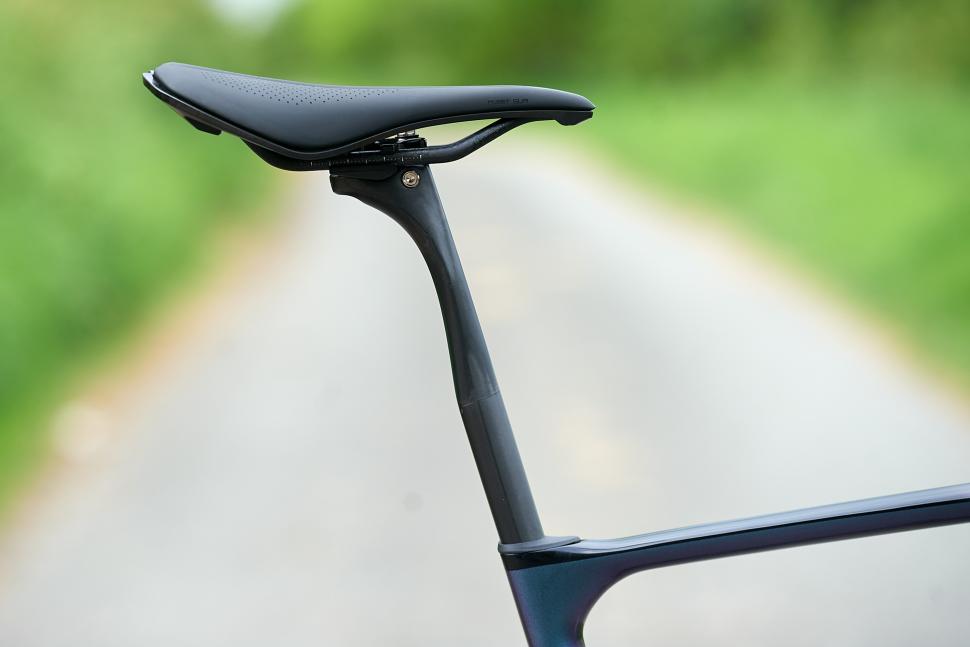
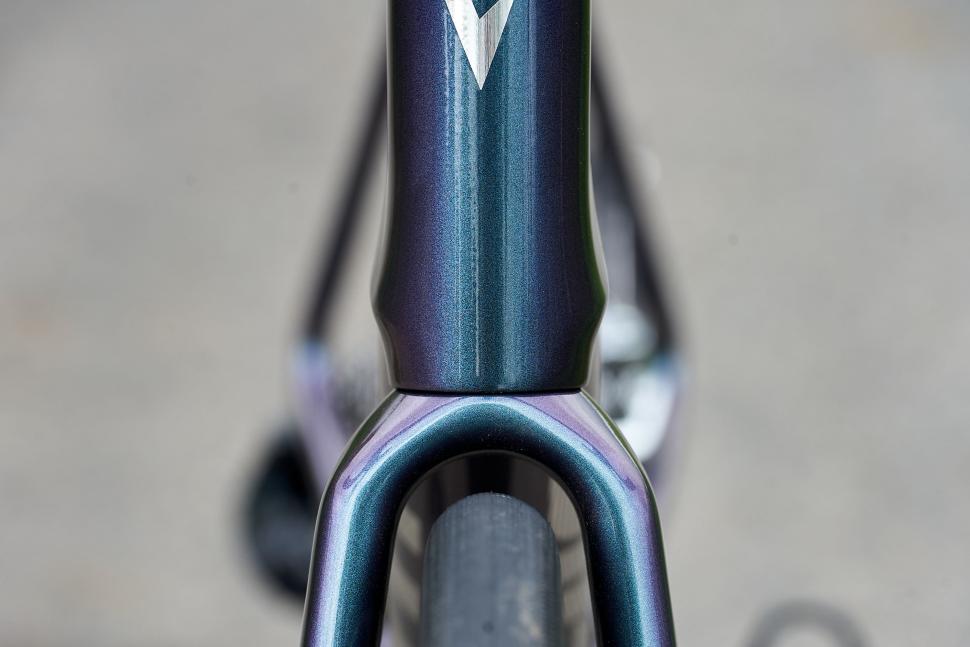

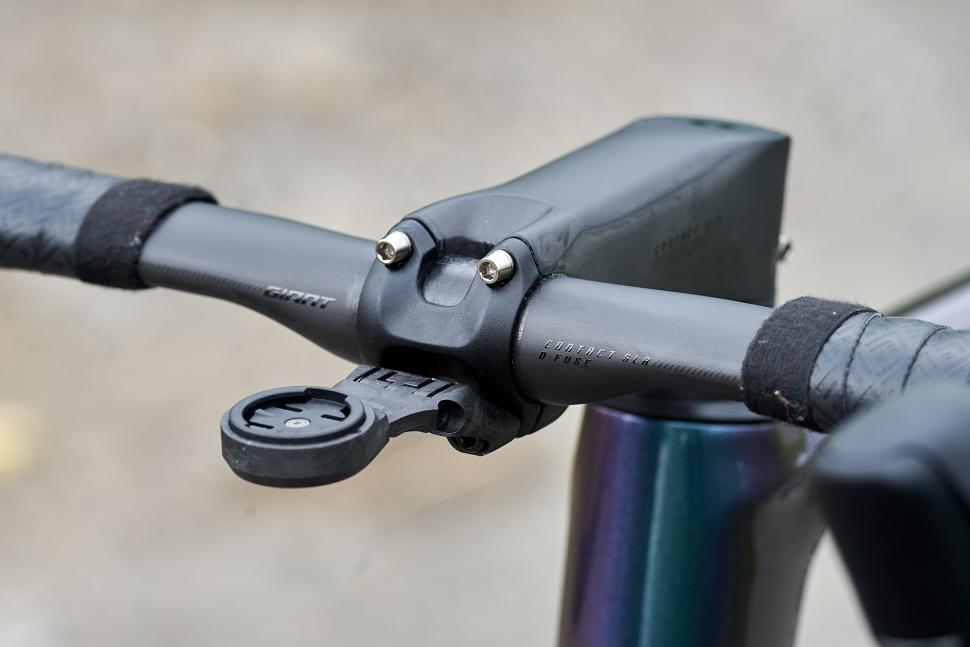

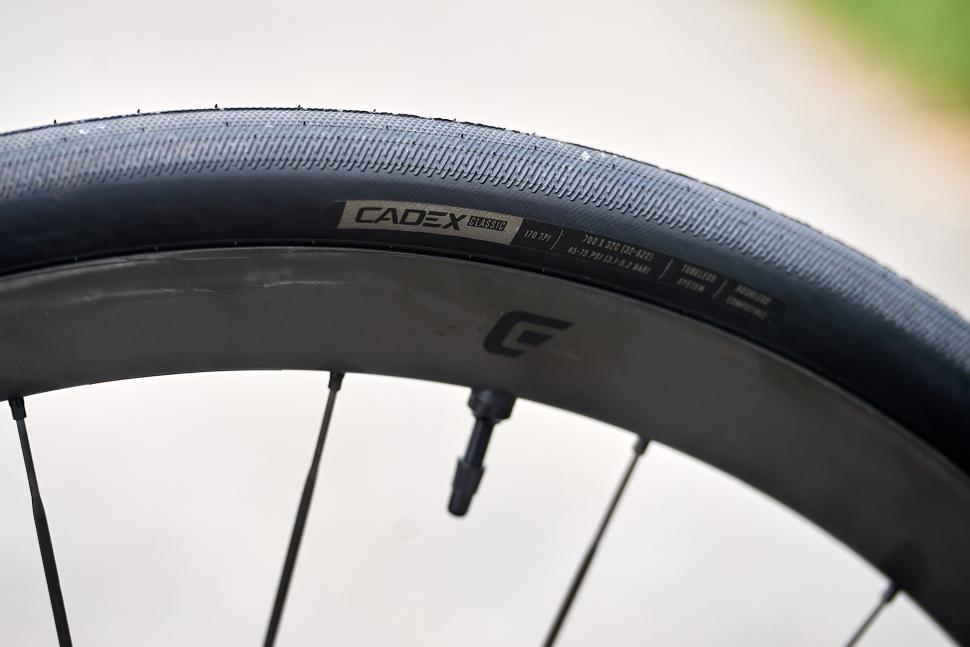




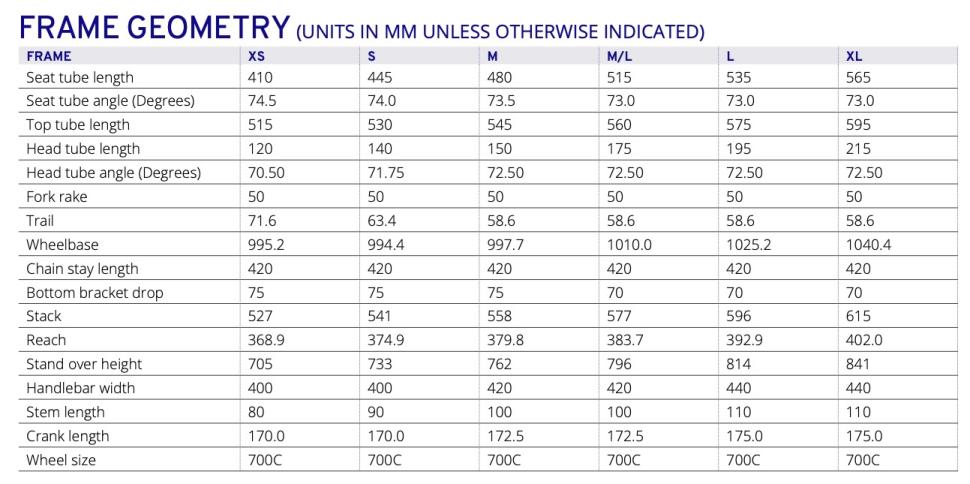
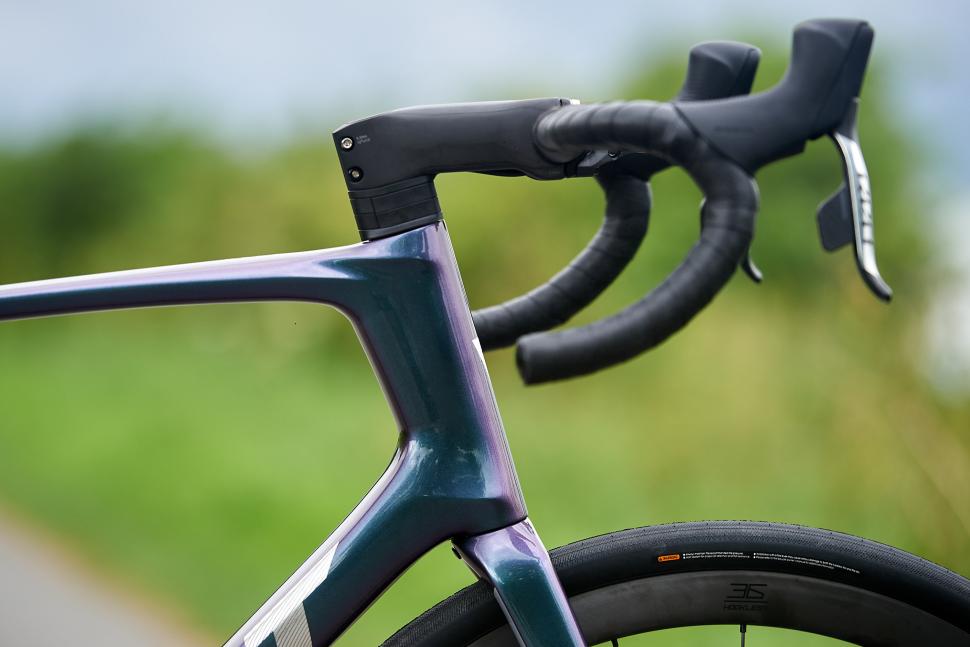
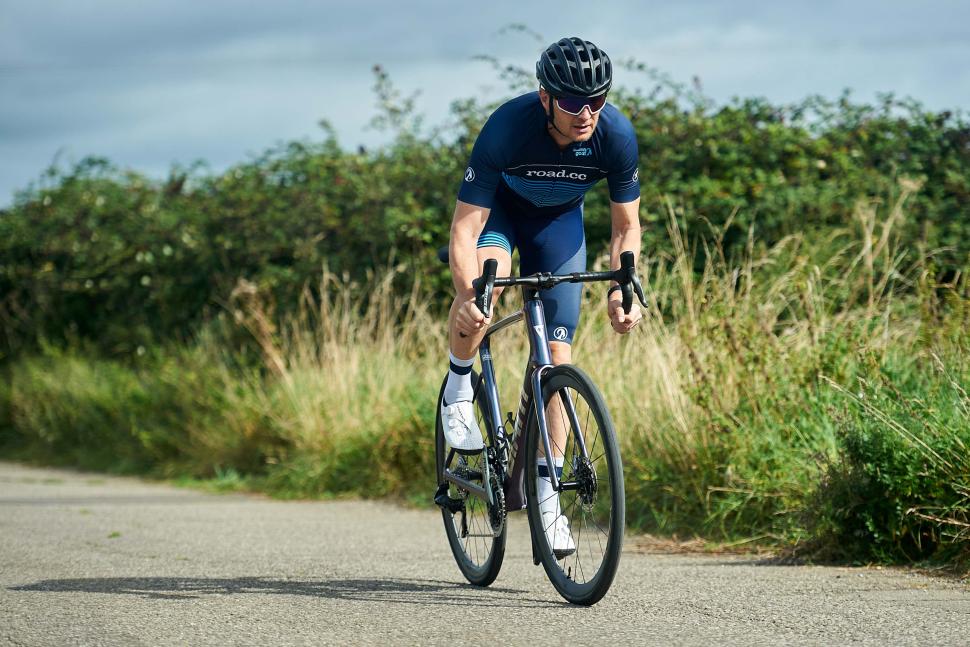

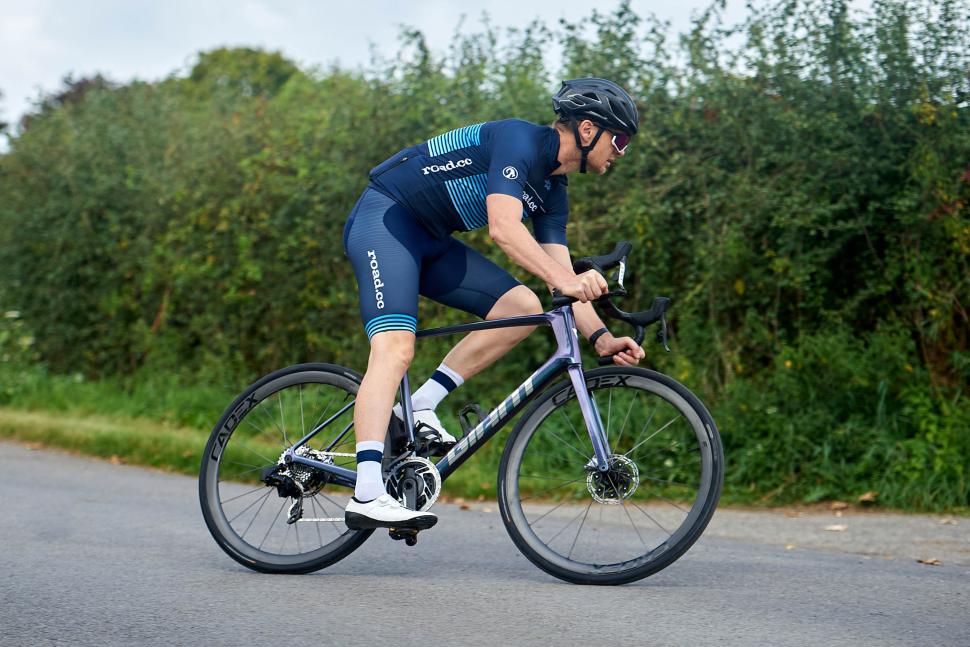









































Add new comment
36 comments
Not exactly.. The components need to be registered and race approved but you're free to bolt any approved competent to a UCI approved frame/fork. Also I'm not sure if they race the Defy these days, possibly only at the cobbled classicd
Except the at the Defy hasn't been raced by pros for a long time. Although it is UCI approved so I'm not sure where that leaves the point about pro bikes being available for sale.
What have you got against frocks and handbags?
He thinks female athletes don't really try their best in sports and would do better if forced to compete against men, so it's not surprising that traditionally-female items pop into his mind when he's trying to think of something contemptible. It's how misogynists' minds work.
Well .... it would take so long to fully explain; and Mark 1a would become too pressurised i' his tolerance gland (which is very, very small) so might blow up and make a sweary mess everywhere. Brauchsel would cry "mysogynist" and demand that free frocks and handbags be given to every women to distract them from wanting any kind of equality of opportunity or to be otherwise taken seriously as full human beings as good as himself at cycling (probably better).
Suffice it to say that I find the compulsive buying of decorative apparel designed and sold as faux-emblems of personal worth in a hierarchy of atomised consumer-ciphers obsessed with promenading their images rather than enjoying their substances .... a risible spectacle. Poseurs often are, whether doing so with an overpriced frock, a handbag, a bicycle or a wankpanzer.
And just to be entirely unambiguous on the subject, it seems doubly risible that dafties with too much money and not enough sense become very keen on using a very expensive (vastly overpriced, in fact) bicycle and bicycle apparel in a similar way, in laughable attempts to convince themselves and others that they are macho cyclist racer men just a smidge away from getting selected to win the TdeF.
But its all just nasty me being arrogant, so don't worry.
My winter bike is an Alloy defy whih is super comfortable. A few yoga sessions, pre season are needed to get me riding my racing bike after the comfort of the Defy. Highly recommend
Pages